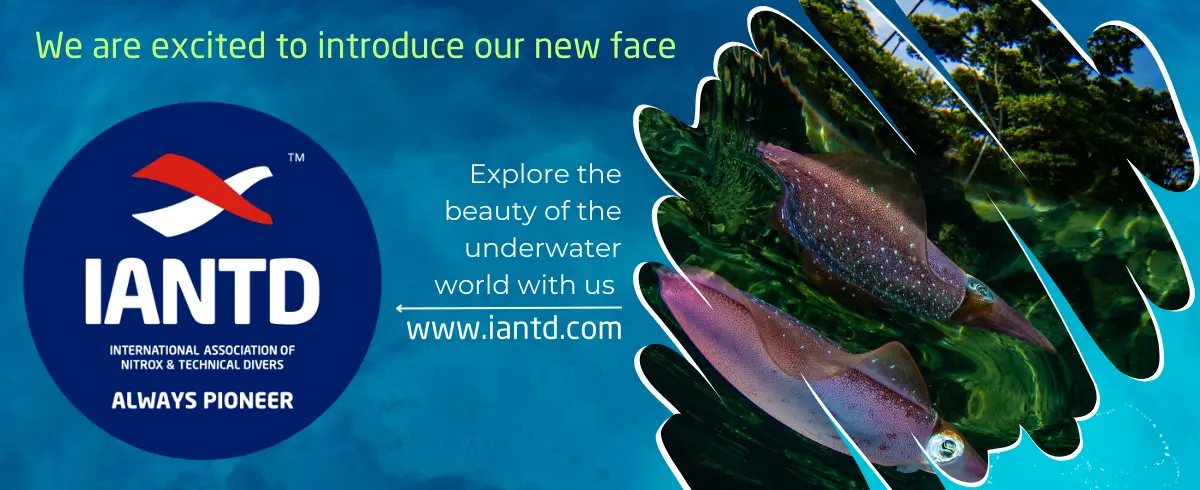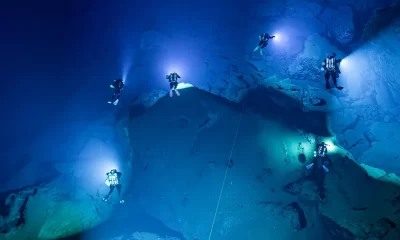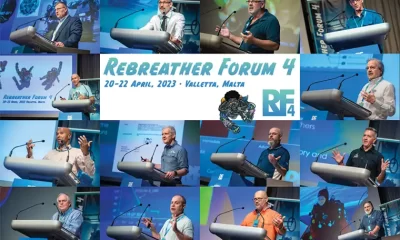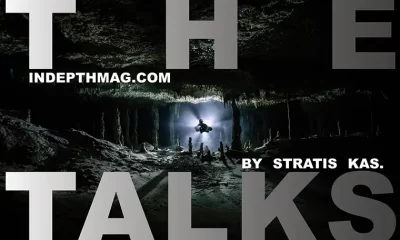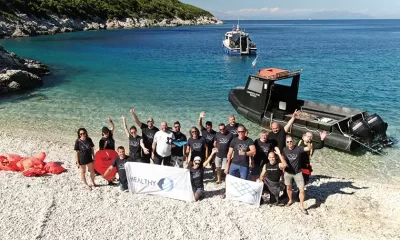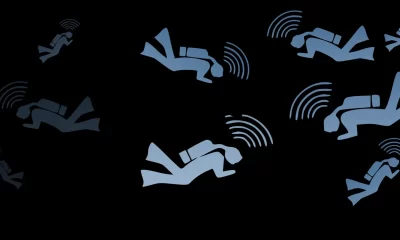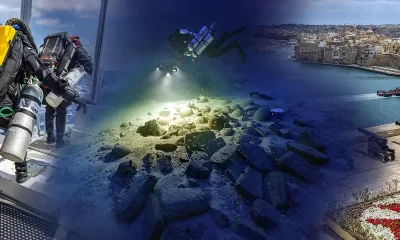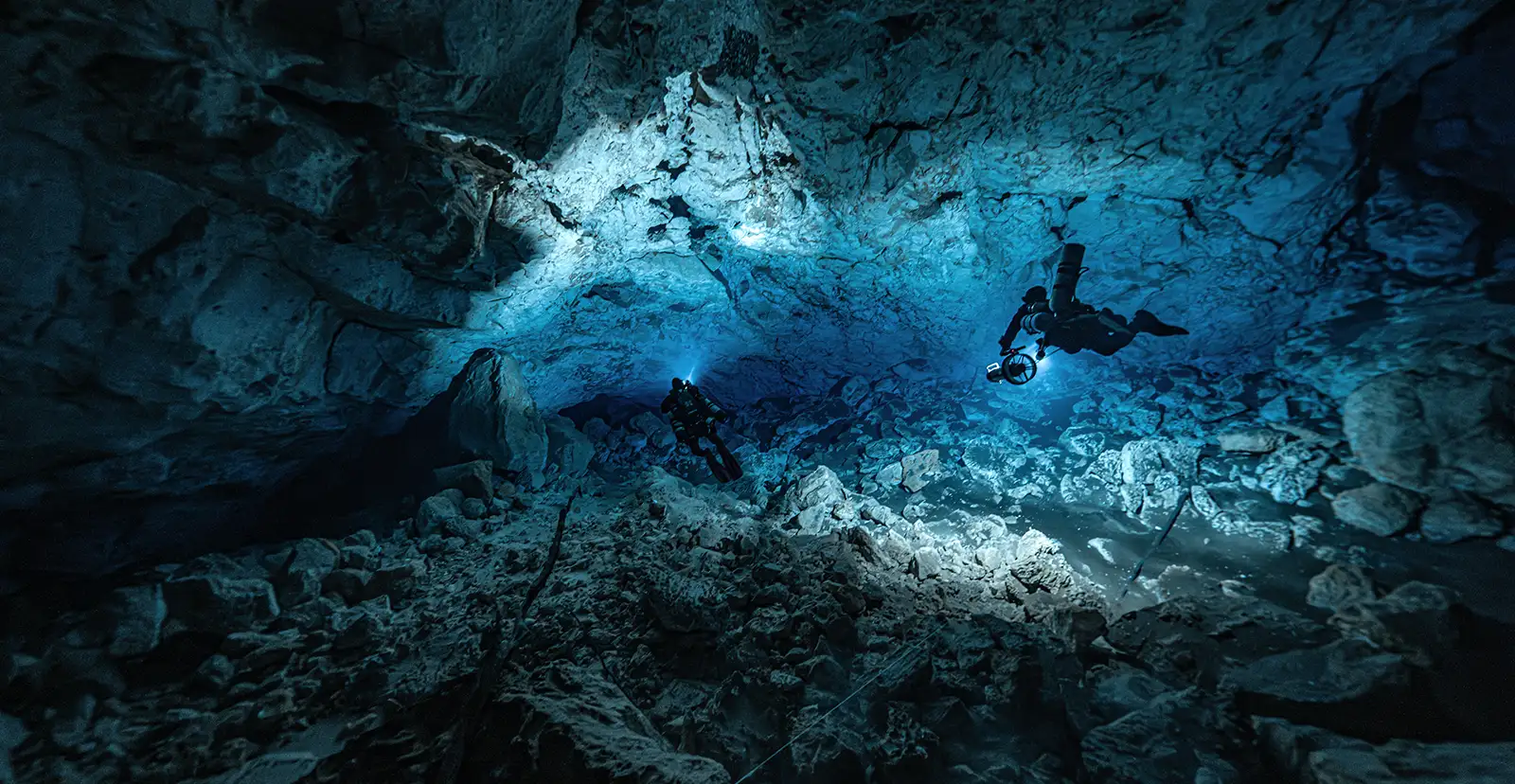
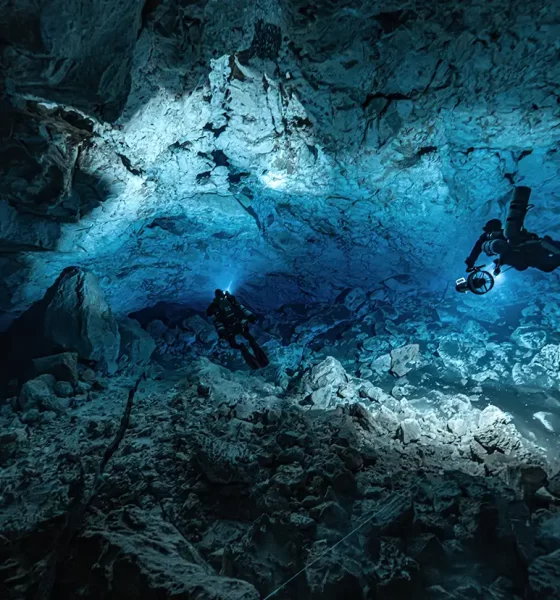
Cave
Exploring Cenote Yaakun—the Yucatan’s New Deep Cave
There are only a handful of 100-meter-deep caves in Quintana Roo, Mexico, so when a colleague suggested he may have found another one, cave instructor/explorer Skanda Coffield-Feith jumped at the chance to go. Here he recounts the ensuing tale of progressively exploring a deep new site with its challenges, like access (they had to repel 20m/66 ft to the water), logistics, and equipment problems. Then, of course, there were rewards! 100 m Booty Scooped! Here is his report.
By Skanda Coffield-Feith. Images by Alvaro Herrero aka Mekan unless noted. Lead image: The author (furthest) with Jake Bulman descending down the slope to the deep section.
In late 2020, I went to dive a cenote close to Playa del Carmen. A friend, Tristan Ternat, had dived there and said it was a deep sink hole but maybe there was a deep horizontal cave. Because of the limited gas he had with him, he wasn’t able to dive deeper to check. He said if I wanted to, I could go and take a look. Having recently been certified to use helium in the rebreather, I jumped at the chance.
Deep Caves in Quintana Roo
In Quintana Roo, there are only a handful of caves that drop 100 m/328 ft or more: the Pit is the deepest, dropping to 120 m/394 ft with the Blue Abyss close behind it at 112 m/367 ft at the deepest point. The other two deep places are much harder to access—a deep sinkhole called Yab Yum on private property drops to 90 m/295 ft and the Hoyo Negro (or Black Abyss), a deep pit that is an active archaeological site and closed to divers, which bottoms out around 60 m/197 ft. In 2020, myself and some friends explored another deep cave—Cenote Bendicion—which dropped just below 70 m/230 ft at its deepest. But the possibility of another cenote with a deep cave was super interesting, and not something I could pass up!
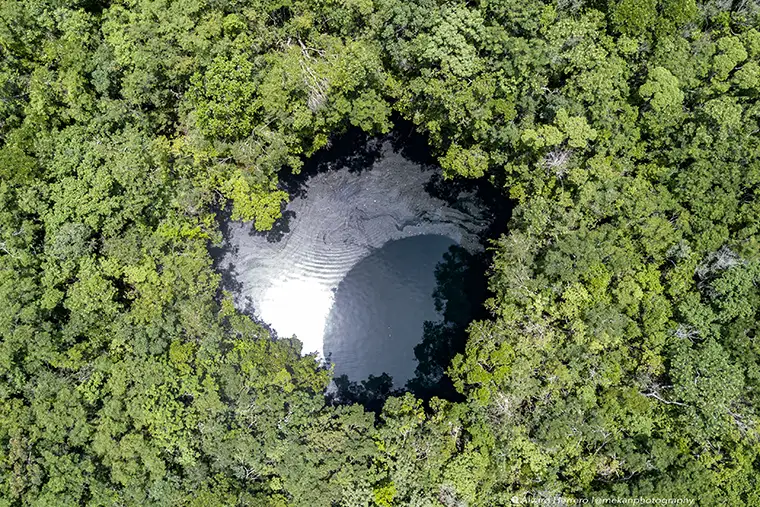
First Scouting Mission and Dive
On a day off, I loaded up the truck with gear, met a couple of guys who were going to help carry tanks, and got ready to hike gear through the jungle to Cenote Yaakun aka Godzilla’s Void. We drove up towards Playa del Carmen and then turned off into the jungle. Initially the road was in good condition, as Rio Secreto uses it to access their dry cave system; but the further in, the worse the road became.
As we got closer to the place we could park, we had to watch closely for a few gaping holes in the road. I really didn’t want to have one of the truck’s wheels drop into a hole and be stuck out there! Finally we arrived at the closest point to the cenote we could get to in the truck and unloaded. Then began the hike into the jungle carrying dive gear, climbing rope, harness, and the sidemount tanks. I had been told that the cenote was big and deep, but I was not expecting something as big as this!
Approaching through the jungle, the vegetation opened up and we were on the edge of a cliff looking out over the cenote. It was a good 20 m/66 ft drop to the water, the cenote looked like it was 50 m/164 ft across! We had come prepared with climbing gear, but I was daunted by the sheer size of the site.
For one, I’m not so experienced with rigging rappelling gear. And second, the thought of being down in the cenote, underwater and having a problem with the only people around waiting twenty meters above me was not so comforting. Safety won over curiosity, and we decided to leave the gear and come back with another diver to support in the water.
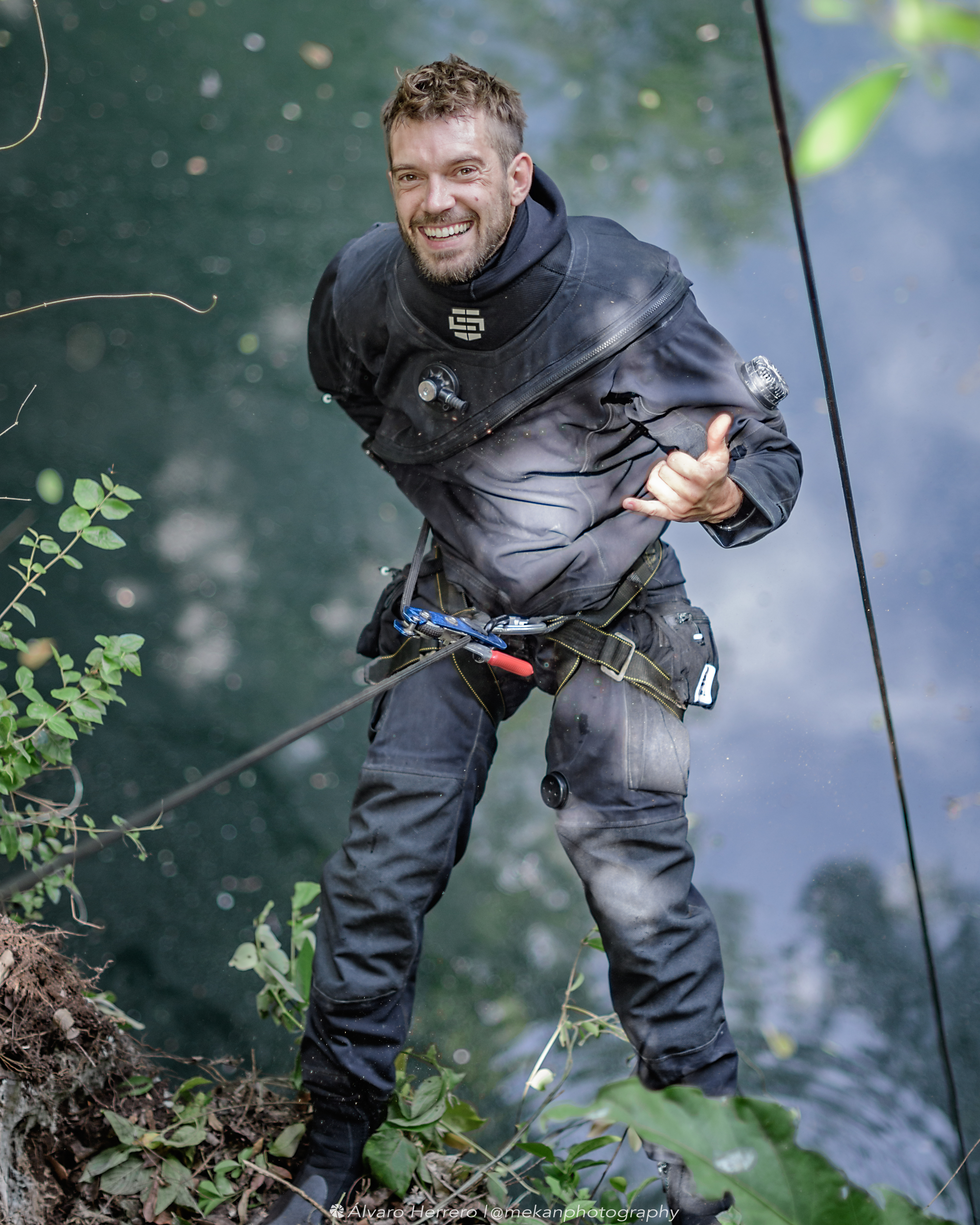
Taking the Plunge
The following day, we went back with Tamara Adame as a support diver and shallow water scout. We rappelled down to the water surface, attached our sidemount tanks, carried out pre dive checks, and we were ready! On the surface I found the line that Tristan had put in and followed it down, splitting up with my buddy who was going to stay shallow and search for other cave entrances. At around 23 m/75 ft, there was a thick layer of hydrogen sulfide, and passing through it I smelled the familiar rotten egg smell.
Dropping below it into the saltwater layer, everything changed! The water was crystal clear and the visibility opened up; the walls were a brilliant white. I followed the line down to 50 m/164 ft, where the line ended. The cave continued to slope downwards, so I tied in my reel and headed down, laying line and making tie-offs. At around 70 m/230 ft, the cave pinched down into a restriction where the boulders of the collapse seemed to choke the slope. But there was more than enough room to comfortably pass, making tie-offs on the way. And the cave opened up! The tunnel sloped down, then leveled off in a massive tunnel!
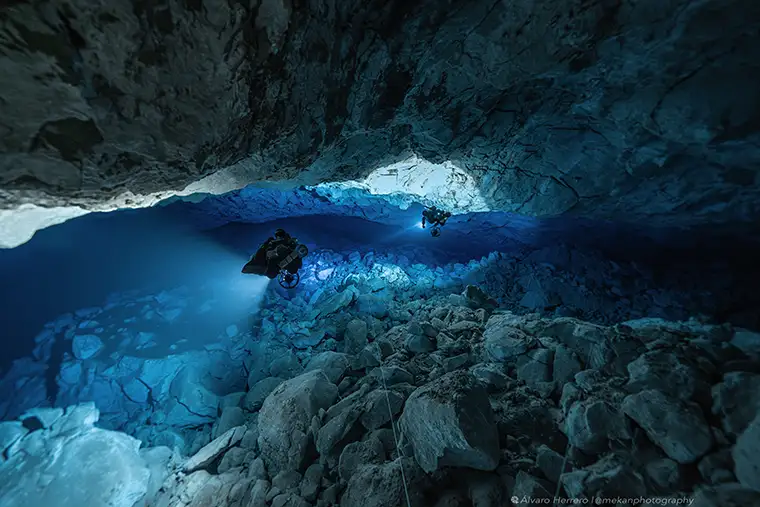
At a glance, it looked to be at least 20 m/66 ft wide, endless and with some deeper sections on the sides. I continued to lay line, trying to control my excitement and make good tie-offs. Here I tried to remember ProTec part-owner Patrick Widmann’s advice when deep diving: treat it just like any other depth, and make good tie offs, ones that would last for future dives, rather than give into excitement or time pressure and do a bad job. All the while, I wanted to share the moment with a team of dive buddies. Exploration is more fun with a team, rather than celebrating alone! So I made a final tie off at 80 m/262 ft depth, cut the line, and began to survey out… With the cave continuing, we would be back, but with a team and the tools to dive deeper and deal with long decompressions.
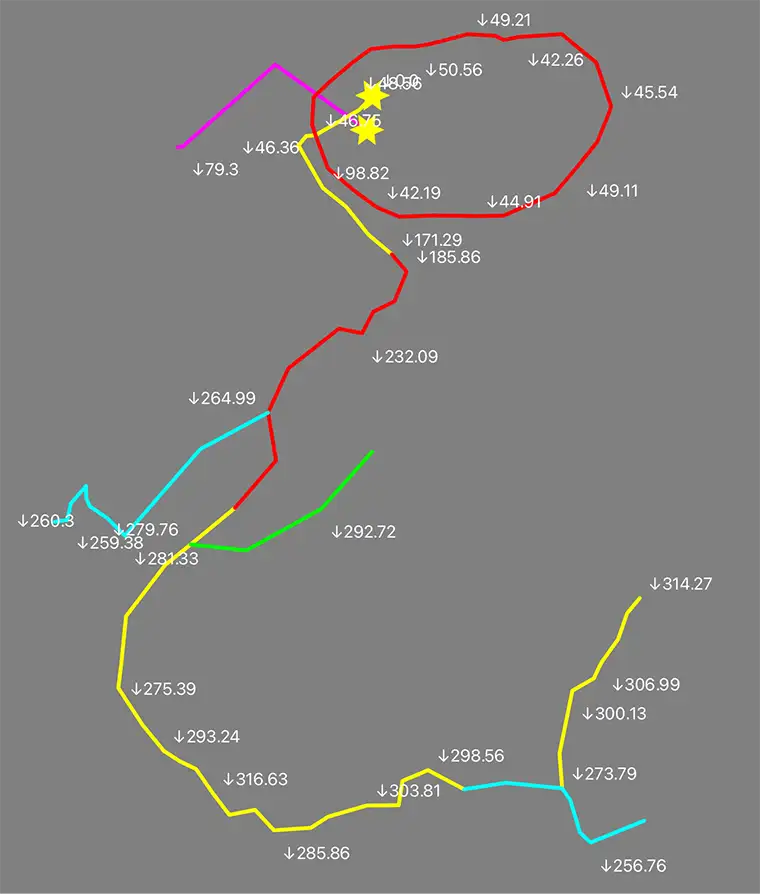
Returning With a Team
The image of the massive tunnel that continued on was stuck in my mind. I really wanted to go back and see how far the cave would go, and whether it would go deeper. Though 83 m/272 ft was the maximum depth from the survey, on the sides of the tunnel it looked like it would go down to at least 100 m/328 ft with some side passages. So, needless to say, I was curious and wanted to see more!
Organizing the return took a few months; there was no time over the high season, and we waited until Jake Bulman, Tristan Ternat, Patrick, and I were all available to go together. There was some other preparation needed to be able to do the dive. Planning for a dive like this is a bit challenging. We didn’t know how deep the cave would continue to be, nor how long our bottom time would be. Both of these factors are essential for decompression dive planning!
So we planned to be very conservative with our bottom times and to pad out the decompression knowing where we were was quite remote (to drive back to the nearest decompression chamber in Playa del Carmen would be at least an hour) and difficult due to the access to the water. A 20 m/66 ft vertical ascent and then a twenty minute hike back to the trucks is definitely not recommended after a heavy decompression dive!
Our dives were planned using decompression software but we used a ratio decompression strategy to give us more flexibility based on the actual dives. This approach would allow us to adapt our planned time based on what we found—whether the cave continued at 80 m/262 ft, went deeper, shallowed up, or worst case, just ended and enabled us to estimate what our decompression obligation would be based on the actual dive.
This is the same ratio decompression strategy we teach in our tech courses, and it was nice to put it into practice for deeper diving. Once we had the plans we had to prepare gas, climbing gear, hiking packs for tanks and gear, and all the logistics around remote cenote diving.
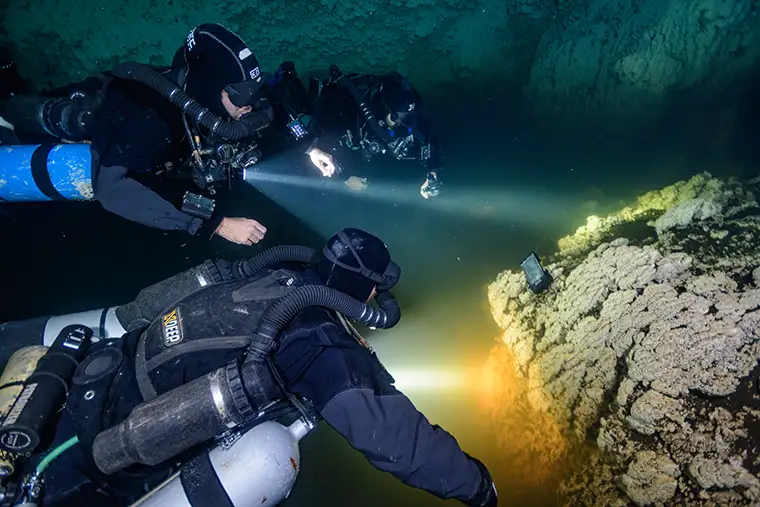
Safety and Planning
We also wanted to make sure we were able to do this in a safe way; diving to eighty-plus meters for an extended period of time, then having to ascend up twenty meters of rope followed by a twenty minute hike sounded like a recipe for decompression illness problems. One part of this was to make sure that our long decompression would be comfortable.
I had been having issues with a leaky drysuit, so making sure that was dry was going to be crucial for long decompression. Sorting this out and having appropriate undergarments for four to seven hours of dive time became critical. Equally important was ensuring we had entertainment to keep boredom at bay over the course of the decompression stops. So an underwater phone housing and a phone loaded with films was pretty critical.
At the same time, it was important to have drinks on hand for rehydration during the long stops. As dehydration is a contributing factor to decompression illness, we made sure we had plenty of electrolytes we could drink while making our required stops.
Finally, in February of 2021, we pushed the end of line where I had cut and tied off my reel. Reaching this end of line with Tristan and Patrick, each of us gazing around awestruck by the size of the cave and throwing up excited hand signals, was a pretty cool feeling! Much better to share it with friends! Tristan tied the exploration reel into the end of the line, I connected the MNemo survey device, and off we went. As Tristan was on open circuit, he began to explore but quickly reached his gas pressure and turned back. I took over the reel, and Patrick the Mnemo, and we continued on! The cave continued to be big before the tunnel sort of shut down because of another breakdown. Was this a way up to a shallower level of cave?
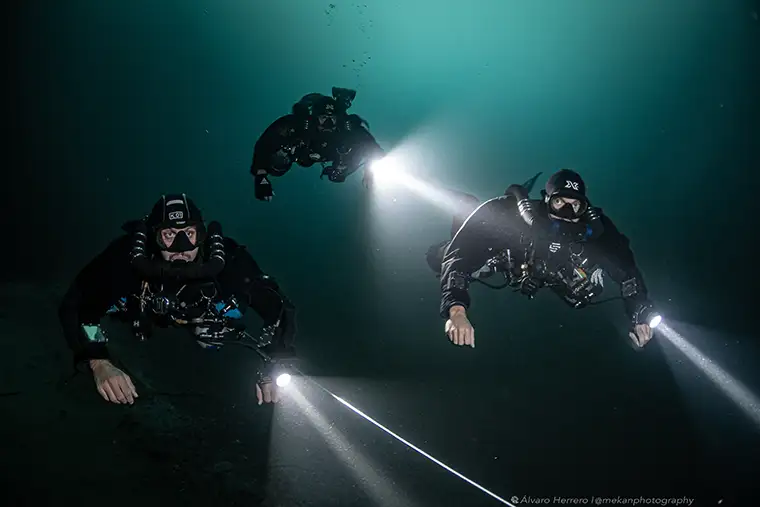
The Return
Looking for a way to stay at depth, we started to head east. The cave was dropping to the deepest point and going through a smaller choke point. We continued up through this point, but with our decompression obligation racking up we decided to turn. Where we finished, the cave was continuing but was going small and sidemount-sized. We made our way out and began our long decompression back to the surface. Dives were planned for a bottom time of 30-40 minutes, which in turn meant we planned for four to five hours of decompression stops!
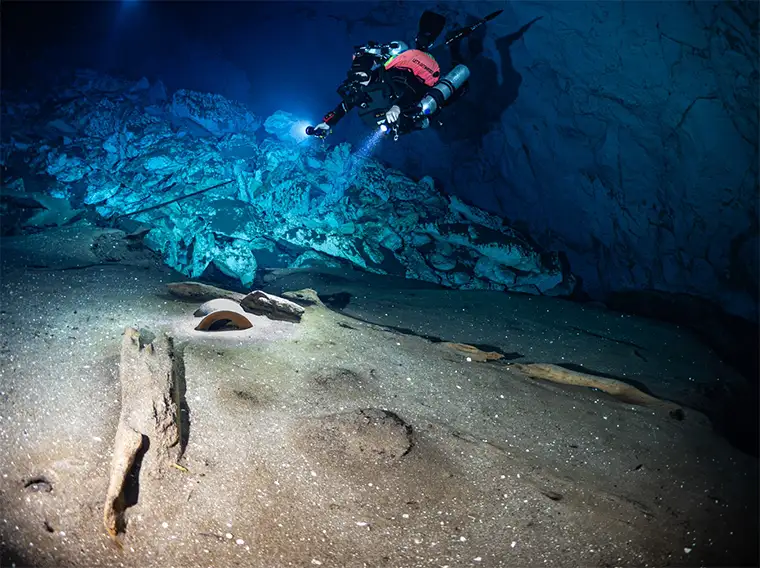
Photo by Ben Lair of BJL Diving and Paragon Dive group
Rebreather Team Returns
Knowing that there was more cave to explore—and tempted by the tantalizing depths off the sides of the mainline—we planned to go back for more. This time, it was an all-rebreather team as open circuit just didn’t make sense. For the next dive, Jake, Patrick, and I decided to push out potential side passages to see if there were more tunnels. This was instead of the swim to the end of the line (nearly 400 m at an average of 90 m) and try to push that.
On this dive, we had brought along a deep housing for a GoPro to capture some video of the place. So, this was one of our goals as well as continuing to explore and survey. Our team of three shot video on the way down to the main deep passage showing the cenote, the breakdown pile and then the tunnel itself. On the previous dive we had identified a couple of promising leads on the sides. The first of these had looked promising, and seemed to run in a north-west direction, but very quickly became smaller. As the cave got smaller, it began to shallow up into a breakdown. This didn’t seem like the way to go, so we tied off the reel and headed back (having surveyed the line on the way in).

The next lead we checked didn’t work out either as the line went back in the direction of the breakdown and cenote. As our decompression obligation had been mounting we decided to call the dive and headed back up to begin our long decompression. On the way up were met by Álvaro Herrero aka Mekan who had come along as surface support and to do some shallow photography. He was able to get some pretty nice surface shots, as well as capture our decompression plan: movies!
Using an underwater phone housing, we were able to watch movies during long decompressions! Movie selection is important as too much dialogue or complex plot lines can be hard to follow… better action films like Transformers or Marvel!
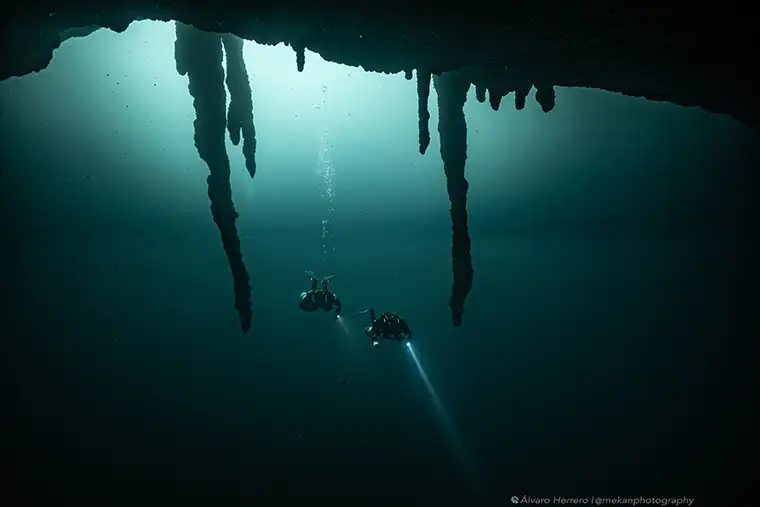
Final Push Dive
Our final dive at the Void was a bit of a personal disaster. At some point between getting dressed in my harness and rappelling down into the cenote I tore open one of my wrist seals. I only noticed when I had started to attach my sidemount tanks. The feeling of a torrent of water pouring into my suit was super frustrating! All the planning and preparation for the dive, only to not be able to dive because of gear failure! I was pretty angry at the time! So while the guys went to push the end of line, I sat out as surface support, feeding the mosquitos in the jungle! At this moment I decided that from then on, my drysuits would have quick change seal systems!
Jake and Patrick went down to our previous end of line and continued where the cave began to get small. A few shots later, the cave ended, but teeing off one of the tie-offs there was a part which continued. They added another 125 m/410 ft more to the length of the cave at an average depth of 90m/295 ft through some smaller passages. As decompression obligations mounted, they decided to turn the dive there.
Meanwhile, on the surface, I amused myself with a little hike in the jungle looking for other interesting cenotes but without much luck. Later I tried to nap a bit but then heard bubbles breaking as the guys came back to open water. Hours later, I heard their voices once they had breached the surface. The wait was over, but now there was a lot of anticipation to find out about the dive and what I had missed! Did the cave continue? How big were the tunnels? And one of the most important questions to ask following any exploration dive: Was it the biggest and most beautifulest cave in the world??
What Comes Next?
With the access difficult and the dives becoming longer, we decided that we would need a dedicated week to continue the exploration. Setting up the bailout tanks, using scooters to reduce our travel time to the end of the line and reduce effort swimming through the water at depth, and having support divers all would help to improve safety and exploration outcomes.
Unfortunately, getting time off as a team was not lining up; other projects like the Blue Abyss and busy teaching schedules meant that we have not managed a return. Now, fast forward to 2024, and the cenote owners have made easier access. The road goes all the way to the cenote, and they have put in a dive platform and stairs! So a return is imminent!
DIVE DEEPER
InDEPTH: The Who’s Who of Sidemount: Skanda Coffield
InDEPTH: Keep It Simple Sidewinder By Jake Bulman and Skanda Coffield

Since 2016, Skanda Cophield-Feith has been living in Mexico, working at ProTec Dive Centers. Originally from Australia, he made the move to be close to the longest underwater cave systems in the world. When not teaching cave diving or training new Sidewinder divers, he spends his time diving his Sidewinder and exploring new and old cave systems.









